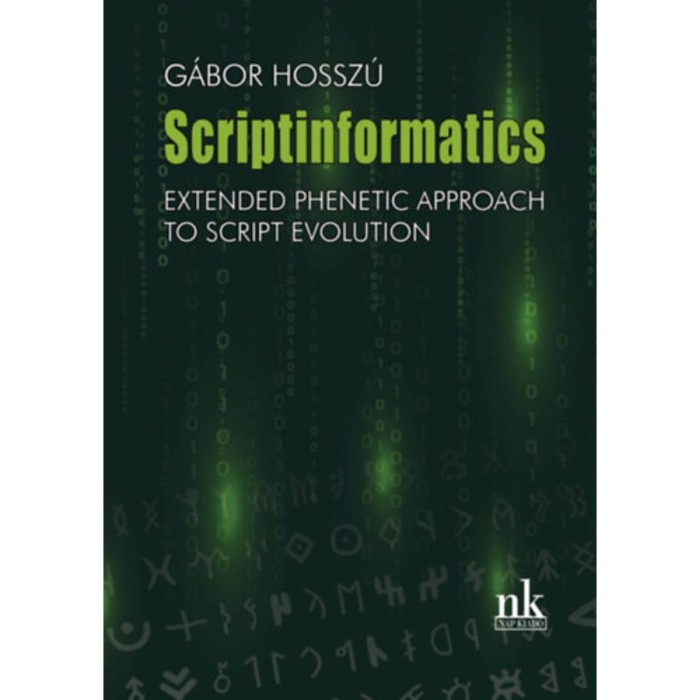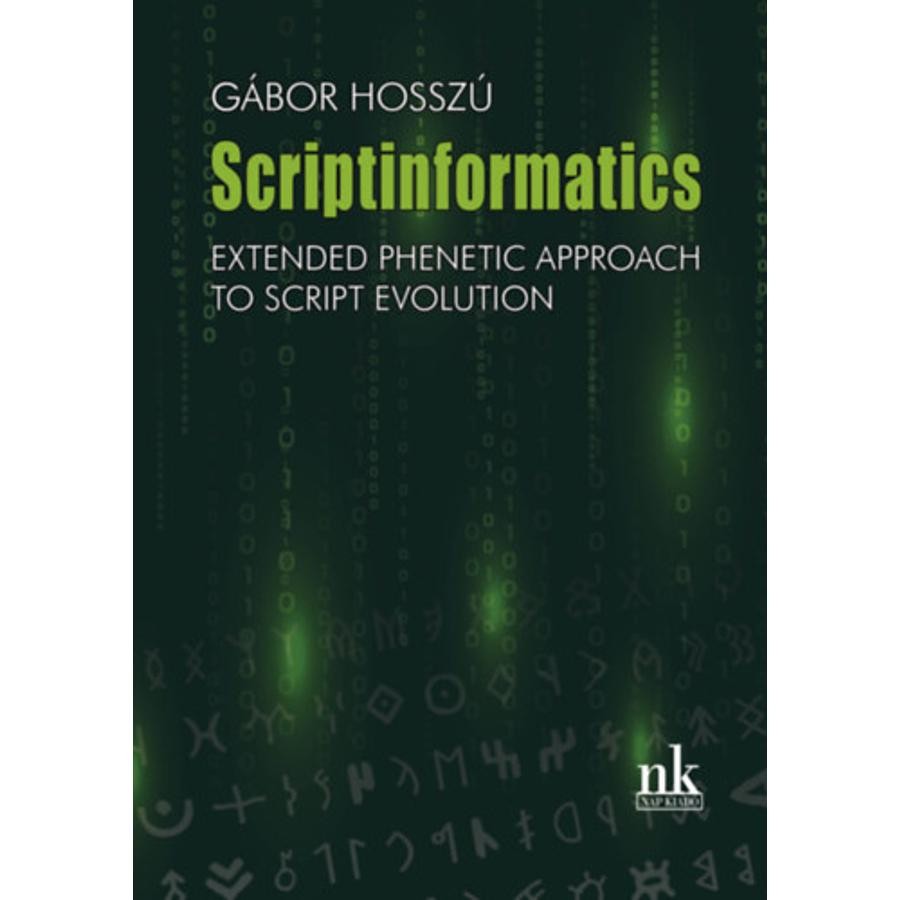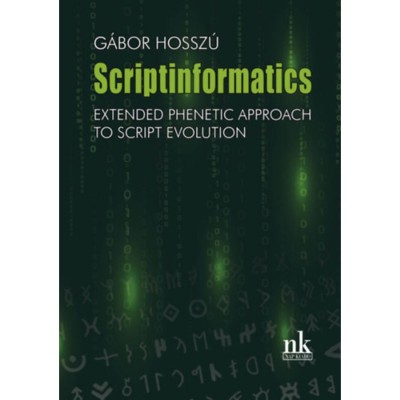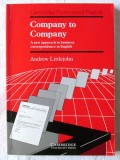Scriptinformatics - Extended Phenetic Approach to Script Evolution - Dr. Hosszú Gábor
- Ramburs
-
Ramburs cu Garantia de Livrare

Curierul special îți livrează produsul pe care tu îl achiți la primire. Dacă produsul nu este ca în descriere, îți recuperezi banii, inclusiv taxele de transport.
- Online


Descriere
Raporteaza produsVânzatorul este direct răspunzator pentru produsul afișat în această pagină.
Specificatii
A szerző, dr. Hosszú Gábor
okleveles villamosmérnök, jogász, jelenleg tanszékvezető-helyettes,
habilitált egyetemi docens a Budapesti Műszaki és Gazdaságtudományi
Egyetem Elektronikus Eszközök Tanszékén. Témái: írásinformatika,
internetes kommunikáció, intelligens szenzorok, szenzorhálózatok,
klaszteranalízis, gépi tanulás, mesterséges intelligencia,
rendszerszintű tervezés, elektronika, mikroelektronika és magzati
szívhangok elemzése. Ebben a kötetében a türk és a magyar-székely
rovás írásra alapozva azt modellezi, hogy a véletlenszerű
jelegybeesések tévútra vezethetik az írások keletkezésével
foglalkozó kutatókat. A szkriptek (írásrendszerek) általában
meghatározott nyelvekhez tartoznak, időbeli, területi és kulturális
jellemzőkkel rendelkeznek. Az írások evolúciója régóta kutatás
tárgyát képezi. Ennek valószínűleg az az oka, hogy az emberi
gondolkodás hosszú távú fejlődését tükrözik a fennmaradt
írásemlékek, amelyek közül sok még ma sincs megfejtve. A könyv
bemutatja az írásevolúciónak a rendszertan, a filogenetika és a
bioinformatika matematikai eszközeivel történő vizsgálatát. Az
ismertetésre került kutatásban az írás az evolúciós osztályozási
egység (taxon), ami analóg a biológiai faj fogalommal. A
filogenetika módszerei közül a fenetika a vizsgált taxonokat
morfológiai hasonlóságuk alapján osztályozza, és nem elsősorban a
leszármazási viszonyokat vizsgálja. Azonban az írásokat meghatározó
jellegek morfológiai sokféleségének hiánya miatt az evolúciótól
független tulajdonságok véletlen egybeesése sokkal gyakrabban
fordul elő az írások esetén, mint a biológiai fajoknál. Ezért a
csak morfológiai jellemzőkön alapuló fenetikai modellezés hibás
eredményhez vezethet. Emiatt a fenetikai modellezés kibővítésre
került evolúciós megfontolásokkal, így lehetővé téve az
írásevolúcióban megfigyelhető, az egyes írásokra jellemző véletlen
egybeesések (homopláziák) nagy száma miatt fellépő modellezési
bizonytalanságok kezelését. A könyv egy, az írások evolúciójának
vizsgálatára kifejlesztett kiterjesztett fenetikai módszert
ismertet. Ez az adatvezérelt megközelítés segít csökkenteni a
fenetikai modellben rejlő, az írások evolúciója során fellépő
nagyszámú homoplázia miatti bizonytalanságok hatását. A kidolgozott
fenetikai és evolúciós elemzések az eurázsiai steppén (füves
pusztán) használt rovás írásokra, köztük a türk rovásra és a
székely-magyar rovásra kerültek alkalmazásra. Az írások
kiterjesztett fenetikai modellje, a különféle fenogramok, az
írásspektrumok és a csoportspektrumok kiértékelése segített a
vizsgált írások legfontosabb elődeinek és fejlődési szakaszainak
rekonstrukciójában. The author, dr. Gábor Hosszú, MSc in Electrical
Engineering, MSc in Law, is currently a deputy head of the
department and a habilitated associate professor at the Department
of Electronic Devices of the Budapest University of Technology and
Economics. His topics: scriptinformatics, internet communication,
intelligent sensors, sensor networks, cluster analysis, machine
learning, artificial intelligence, system-level design,
electronics, microelectronics and fetal heart sound analysis. In
this book, based on Turkic and Székely-Hungarian Rovash scripts, he
models that random coincidences can lead researchers astray into
scripts' origin. Scripts (writing systems) usually belong to
specific languages and have temporal, spatial and cultural
characteristics. The evolution of scripts has been the subject of
research for a long time. This is probably because the long-term
development of human thinking is reflected in the surviving script
relics, many of which are still undeciphered today. The book
presents the study of the script evolution with the mathematical
tools of systematics, phylogenetics and bioinformatics. In the
research described, the script is the evolutionary taxonomic unit
(taxon), which is analogous to the concept of biological species.
Among the methods of phylogenetics, phenetics classifies the
investigated taxa on the basis of their morphological similarity
and does not primarily examine genealogical relationships. Due to
the scarcity of morphological diversity of scripts' features,
random coincidences of evolution-independent features are much more
common in scripts than in biological species, thus phenetic
modelling based solely on morphological features can lead to
erroneous results. For this reason, phenetic modeling has been
extended with evolutionary considerations, thereby allowing the
modelling uncertainties observed in the script evolution to be
addressed due to the large number of random coincidences
(homoplasies) characterizing each script. The book describes an
extended phenetic method developed to investigate the script
evolution. This data-driven approach helps to reduce the impact of
the uncertainties inherent in the phenetic model due to the large
number of homoplasies that occur during the evolution of scripts.
The elaborated phenetic and evolutionary analyses were applied to
the Rovash scripts used on the Eurasian Steppe (Grassland),
including the Turkic Rovash (Turkic Runic/runiform) and the
Székely-Hungarian Rovash. The evaluation of the extended phenetic
model of the scripts, the various phenograms, the script spectra
and the group spectra helped to reconstruct the main ancestors and
evolutionary stages of the investigated scripts.
Kiadás éve: 2021
Oldalak: 334
Súly: 546 g
Borító: cérnafűzött, keménytáblás
Nyelv: Angol
Galerie foto

Modalitati de livrare si plata
LIVRARE
In Oradea
-
- Prin curier cu Garantia de Livrare - 18 Lei in max. 3 zile lucratoare

-
- Prin Curier rapid - 9 Lei in max. 3 zile lucratoare
In Romania:
-
- Prin curier cu Garantia de Livrare - 18 Lei in max. 3 zile lucratoare

-
- Prin Curier rapid - 9 Lei in max. 3 zile lucratoare
- Ridicare de la locker Vineri, 12 Dec. - 13,09 Lei
PLATA
- - Ramburs
- - Ramburs cu Garantia de Livrare

Curierul special îți livrează produsul pe care tu îl achiți la primire. Dacă produsul nu este ca în descriere, îți recuperezi banii, inclusiv taxele de transport.
- - Online
Politica de retur
- - Produsul se poate returna in maxim 3 zile lucratoare
- - Metoda de retur: Ramburs contravaloare produs
- - Costul transportului va fi suportat de catre cumparator
- - Alte detalii: Retur acceptat in conditiile Garantiei de Livrare
Spune-ti parerea acordand o nota produsului
















